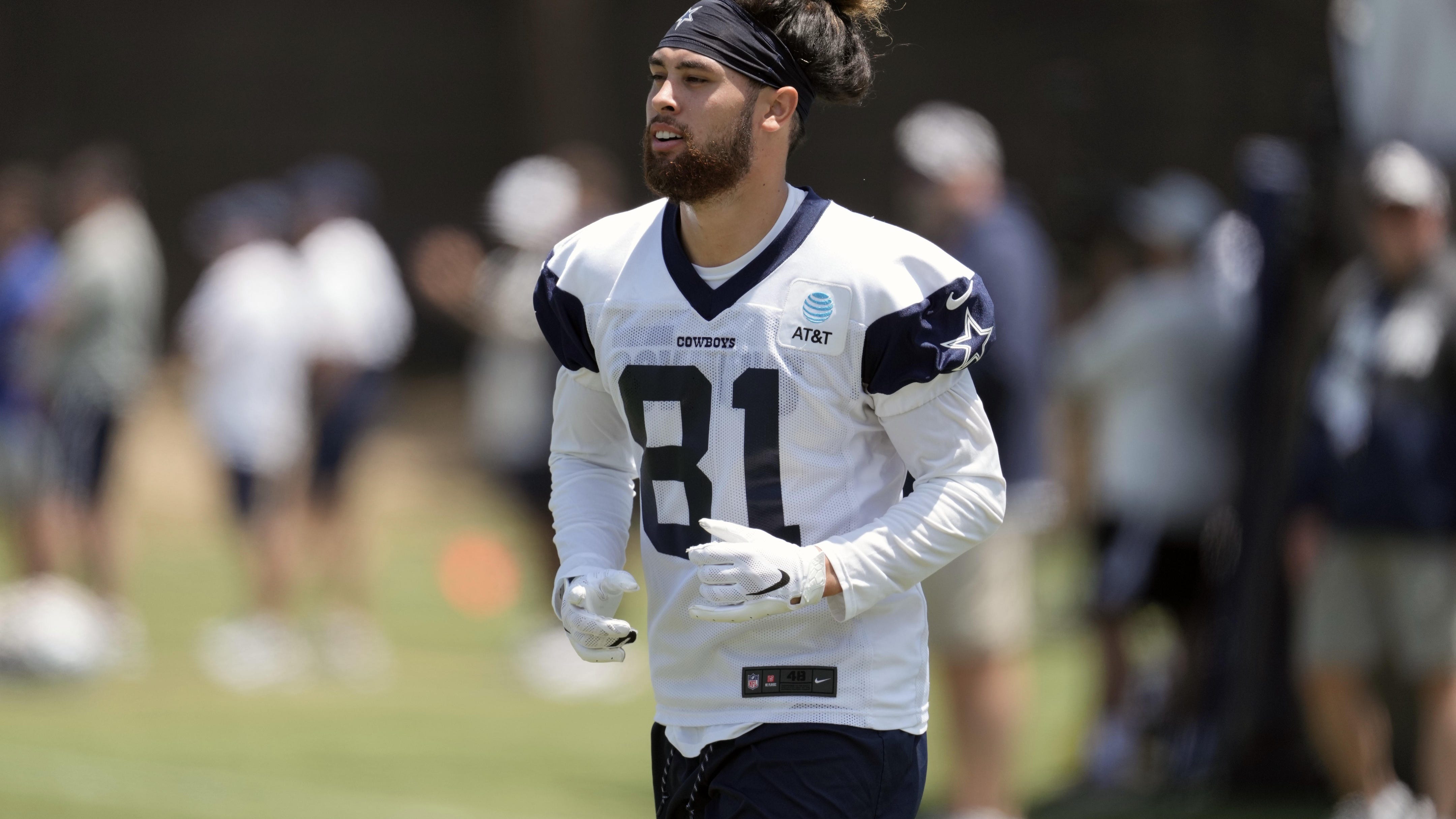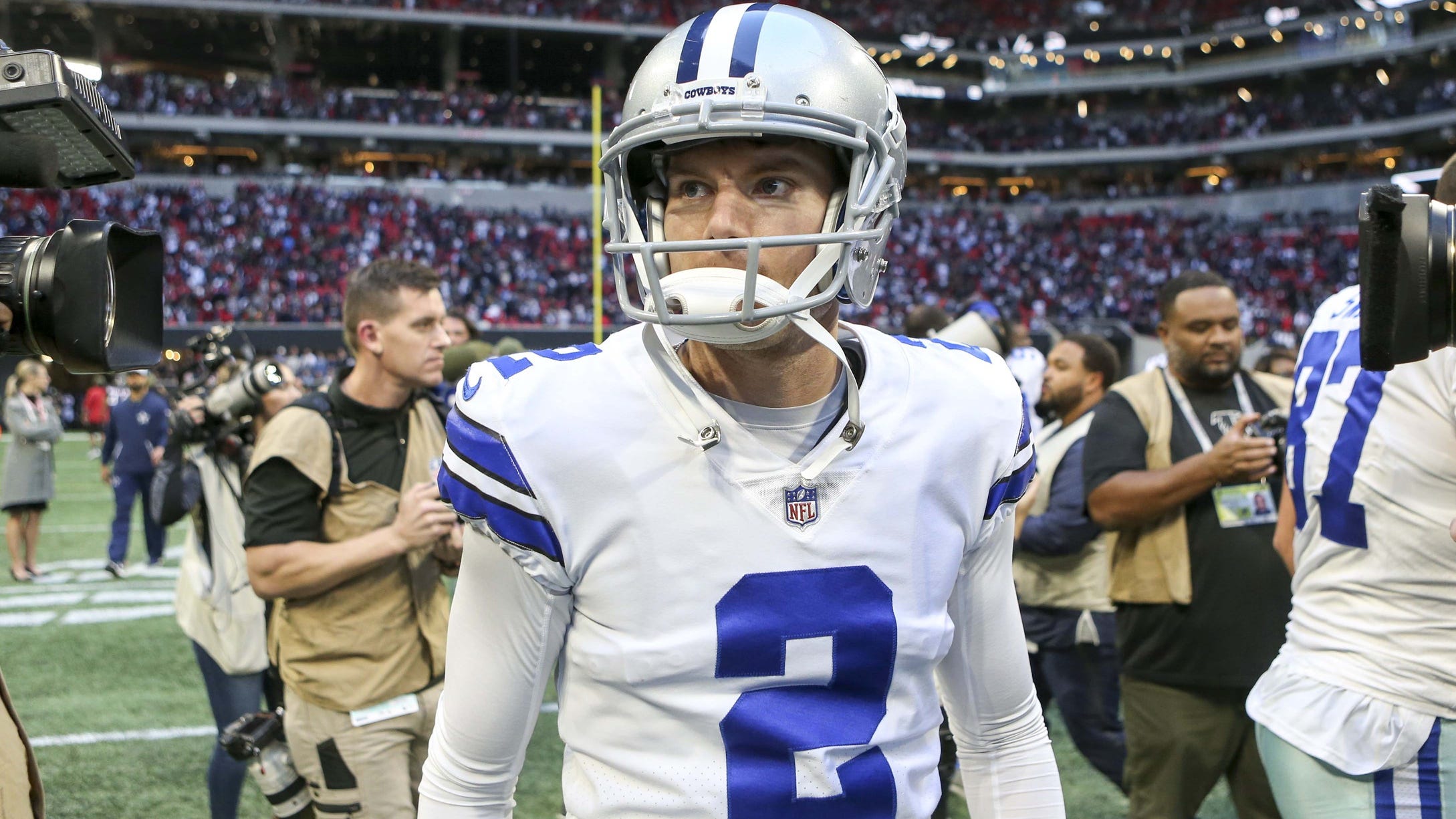OXNARD (105.3 The Fan) - There is a great benefit to Cowboys fans in the type of access that the team allows during training camp.
Fans pack the fields here at Oxnard for a full look at the team practicing, and they allow the media to get right up close and personal on the sideline for some great video shots that fans at home can consume on their social media feeds.

But it’s important to be able to contextualize that content from practice, and there’s been no better example of that in the last week than Trevon Diggs.
Diggs has had an excellent camp here in Oxnard, staying in the hip pocket of receivers during team period, and showing better patience in his coverage, while still demonstrating the natural instincts and ball skills that made him an All-Pro in 2021.
Taking a look at social media in recent days would lead you to believe that Diggs has regressed, and is getting exposed by receivers up and down the depth chart.
This narrative really took off last Thursday when the team broke out one-on-one drills for the receivers and corners. Clips of Diggs getting torched down the field against CeeDee Lamb, and perhaps more notably, Simi Fehoko, quickly went viral. One video from The Athletic’s Jon Machota of Fehoko beating Diggs has amassed almost three million views on Twitter.
The one video generated over 500 replies, and almost 2000 (mostly) hair-on-fire quote tweets.
“Diggs in mid-season form already,” one tweet read. “Diggs is not a serious elite CB,” another added.
One fan even suggested the Cowboys just move Diggs to wide receiver, saying, “He’s got the hands, just can’t cover.”
The problem with the one-on-one drill is that the corner is almost designed to lose the rep. It would be of concern if the wide receivers weren’t routinely getting the best of the corners in these drills.
Like a lot of positions on the football field, cornerback is a very cerebral, mentally demanding game. Corners don’t merely walk onto the field with their athleticism and guess what the receiver is going to do. They use several markers for determining their coverage and how to play the rep.
Almost all of those tools are stripped away in the one-on-one drill. Let’s briefly touch on a list of things.
Down, Distance, and Field Position
Whether it’s 1st and 10 from the offense’s 25, 2nd and 14 from the defense’s 41, or 3rd and Goal from the 6, the corner is using down, distance, and field position on every single snap as part of their coverage equation. In one-on-one drills, aspect can’t be added to the corner’s series of deductions when stepping on the line of scrimmage.
Personnel and Alignment
The number of receivers, tight ends, and running backs on the field also goes into the corner’s calculation. Where they all line up will also eliminate certain concepts for the offense to run. With 60 yards ahead of the receiver, and the entire width of the field, corners have to assume everything is on the table.
QB Drop
One of the ways that Diggs thrives in his coverage is his simultaneous ability to read the quarterback’s drop. Diggs will be able to read certain routes based off the number of steps the quarterback takes in his drop back, coupled with what the receiver is showing him with his body language. In the one-on-one drill, the drop is the same every time, and the quarterback bounces on his toes and waits for the route concept to come to fruition.
Safety Help
It is incredibly rare for a cornerback to play press coverage without some sort of safety help over the top. In fact, when he is in press without safety help, it’s almost always a zero blitz (corners in man coverage, with everyone else blitzing the quarterback), and the press is meant to buy an extra second or two for the defense to get home. Corners are asked to press without safety help in one-on-one drills, which means they are left exposed as soon as the receiver releases.
Outside Leverage
Corners can align a few different ways when covering a receiver, and one of the techniques used is outside leverage. Outside leverage is often used in zone concepts, and means the corner aligns to the outside shoulder of the receiver at the line of scrimmage. It gives the corner an advantage on anything outside the hashes. But to have that outside leverage, you usually need to have some help in the middle of the field from other defenders. With no help in one-on-one drills, corners will have to play head-up, or try to take advantage of the limited room on the sideline and use inside leverage.
Referees
Yes, referees are used in normal games, as well as the one-on-one drills, but the officials become a major disadvantage to corners during these drills. By stripping away all of the normal tools a corner uses, you’re essentially asking them to play sandlot football, but without the normal benefit of extra physicality. Corners are being asked to cover a challenge, unlike anything they would ever see in a game, while still playing within the rules of a normal game.
Context Matters
When it comes down to it, fans should really take one-on-one drills with a grain of salt. Corners are essentially only given their athleticism for the drill, while receivers are able to use a lot of the same techniques they would normally have at their disposal, all with the added benefit of knowing their quarterback will have all the time in the world to stand in the pocket.
Defensive backs skills trainer Clay Mack, who works with several NFL defensive backs, including most of the Cowboys' corners over the courses of their careers, told 105.3 The Fan on Monday that one solution for leveling the drill would be outlawing the receivers from using the go route during the drill.
So why use the drill if it’s such a disadvantage for corners? Well, it’s still a good opportunity for corners to hone some skills in an incredibly challenging position, and it’s a good way to see a player’s athleticism on full display, whether corner or receiver. It also allows the quarterback and receiver to develop some additional chemistry, and get used to freelancing with each other.
And perhaps there’s another reason at play. The Cowboys' receivers have had a really tough time getting open against the secondary in these practices. The drill didn’t debut until more than a week into camp. Is it possible that the coaches wanted to introduce the drill as a confidence builder for a frustrated receiving corps? Not that they necessarily would, but it’s at least an additional theory that might explain the time that was dedicated to it.
In the end, receivers are supposed to win these drills. Below-average receivers routinely beat good corners across the league in these drills. In fact, I find it more impressive when a corner makes any play on the ball at all in this drill than I do when receivers streak down the sideline for their 18th touchdown in a row.
Trevon Diggs is not having a bad training camp. It’s actually quite the opposite. Diggs has been better in this training camp than in the first two of his career. Diggs just fell victim to the brevity of social media, the context it fails to provide, and a starving hoard of critics desperate to say, “I told you so.”



